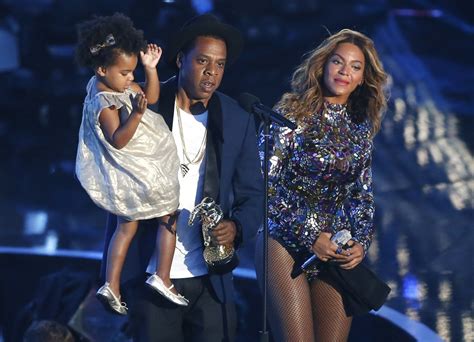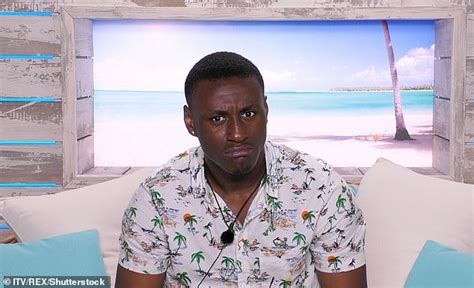
DC’s rogues gallery is legendary, filled with complex and terrifying villains who have challenged the mightiest heroes for decades. A recent ranking dissects the depravity and impact of these antagonists, placing iconic figures like the Joker at the top while acknowledging the nuanced evil of characters such as Lex Luthor and Darkseid. This list examines not only their power but also their lasting influence on the DC Universe.
DC’s Darkest Deeds: Top 10 Villains Ranked!
Gotham City, Metropolis, and beyond are home to some of the most nefarious characters in comic book history. The DC Universe, known for its pantheon of superheroes, also boasts a rogues’ gallery of villains whose names evoke fear and chaos. But who among these antagonists reigns supreme? A recent evaluation attempts to answer this question, ranking the top 10 DC villains based on their power, influence, and sheer capacity for evil.
The Joker: The Ace of Anarchy
Unsurprisingly, the Joker, Batman’s archnemesis, claims the top spot. As noted in the ranking, the Joker embodies “pure, unadulterated chaos.” His motives are often unclear, his methods unpredictable, and his impact on Gotham City immeasurable. The Joker’s appeal lies in his ability to expose the fragility of order and the darkness lurking beneath the surface of society. He is more than just a criminal; he is an agent of chaos, a force of nature that Batman can never truly defeat. He consistently demonstrates the lengths he will go to torment the Dark Knight and push him to his breaking point.
Lex Luthor: The Apex of Human Ambition
Occupying the second position is Lex Luthor, Superman’s intellectual and entrepreneurial foil. Unlike many supervillains driven by madness or a thirst for power, Luthor’s animosity towards Superman stems from a deep-seated belief that humanity should not rely on an alien savior. He sees Superman as an obstacle to human progress, a symbol of weakness that prevents mankind from reaching its full potential. Luthor’s genius-level intellect, vast resources, and unwavering determination make him a formidable opponent. His battles with Superman are not merely physical confrontations; they are ideological clashes that explore the nature of power, ambition, and the human condition. He represents the pinnacle of human achievement twisted by pride and resentment.
Darkseid: The Embodiment of Tyranny
Darkseid, the ruler of Apokolips, secures the third position. He is not merely a supervillain; he is a cosmic tyrant, an embodiment of absolute power and control. Darkseid seeks to dominate all of existence, crushing free will and imposing his iron will upon the universe. His Omega Beams are capable of obliterating entire worlds, and his influence extends across dimensions. He represents the ultimate threat to the DC Universe, a force that requires the combined might of its greatest heroes to resist. Darkseid’s motivations are rooted in a desire for order through subjugation, a terrifying vision of a universe devoid of freedom and individuality. “He is one of the most powerful villains ever created,” the ranking affirms, highlighting his status as a formidable adversary.
Zoom (Eobard Thawne): The Reverse Flash of Terror
Zoom, also known as Eobard Thawne, The Reverse-Flash, lands in fourth place, epitomizing a personal vendetta amplified by time-traveling abilities. As the antithesis to the Flash, Zoom’s malevolence is deeply rooted in an obsession with and hatred for Barry Allen. His capacity to manipulate time not only augments his speed but also enables him to inflict psychological damage by altering timelines and causing irreparable harm to the Flash’s loved ones. Zoom is more than just a speedster; he’s a calculated tormentor, using his powers to methodically dismantle the Flash’s life. His existence is a paradox, a constant reminder of the potential for corruption and the fragility of time itself.
Ra’s al Ghul: The Environmental Extremist
Ra’s al Ghul, founder of the League of Assassins, occupies the fifth spot, embodying environmental extremism taken to its most lethal conclusion. Driven by a desire to restore balance to the planet, Ra’s sees humanity as a plague that must be eradicated. His methods are ruthless, involving large-scale acts of terrorism and ecological warfare. The Lazarus Pit, which grants him immortality, has prolonged his crusade for centuries, making him a persistent threat to Batman and the world. Ra’s al Ghul is not merely a villain; he is an eco-terrorist with a twisted sense of morality, believing that the ends justify the means, no matter how horrific. He represents the dangers of unchecked ambition and the potential for good intentions to pave the road to destruction.
Sinestro: The Yellow Lantern of Fear
Securing the sixth position is Sinestro, the former Green Lantern turned wielder of the Yellow Power Ring. Initially a respected member of the Green Lantern Corps, Sinestro’s descent into villainy stemmed from his belief that fear, rather than willpower, was the most effective means of maintaining order. His control over the yellow energy of fear makes him a formidable opponent, capable of instilling terror in his enemies. Sinestro is a complex character, driven by a desire for control and a belief that his methods, however brutal, are necessary for the greater good. He represents the corruption of power and the seductive allure of fear as a tool for domination.
Brainiac: The Collector of Worlds
Brainiac, the alien android obsessed with knowledge and the collection of civilizations, claims the seventh spot. He travels the cosmos, shrinking and bottling entire cities for his vast collection. Brainiac views organic life as inferior and seeks to preserve knowledge in its purest form, devoid of emotion and chaos. His intellect is unparalleled, making him a strategic and tactical genius. Brainiac is more than just a collector; he is a destroyer of worlds, driven by a cold, calculating logic that disregards the value of life. He represents the dangers of unchecked intellect and the dehumanizing potential of technology.
Deathstroke: The Mercenary of Mayhem
Occupying the eighth position is Deathstroke, the world’s deadliest mercenary. Slade Wilson is a master assassin with enhanced strength, speed, and intellect, thanks to a secret government experiment. His skills make him a formidable opponent for any hero, and his willingness to work for anyone who can pay his price makes him a constant threat. Deathstroke is a complex character, driven by a sense of duty and a desire to provide for his family, even if it means taking lives. He represents the moral ambiguity of the mercenary life and the devastating consequences of war.
Poison Ivy: The Eco-Terrorist of Seduction
Poison Ivy, the eco-terrorist with a deadly touch, lands in ninth place. Pamela Isley’s transformation into Poison Ivy gave her control over plants and a toxic touch that can kill on contact. She is driven by a desire to protect the environment, viewing humanity as a threat to the natural world. Her methods are often extreme, involving the use of toxins and mind control to achieve her goals. Poison Ivy is a complex character, driven by a love for nature and a deep-seated resentment towards humanity. She represents the dangers of environmental extremism and the seductive power of nature.
Harley Quinn: The Clown Princess of Crime (Sometimes Hero?)
Rounding out the top ten is Harley Quinn, the former psychiatrist turned accomplice and lover of the Joker. Her transformation into a villain stemmed from her obsession with the Joker, a relationship that warped her mind and turned her into a volatile and unpredictable force. While initially a henchman, Harley has evolved into a complex character with moments of heroism and a growing sense of independence. Her placement reflects her enduring popularity and the nuanced portrayal of her character in recent years. Harley Quinn’s presence highlights the complexities of abuse, redemption, and the ever-blurring lines between good and evil.
The ranking of DC’s top villains underscores the depth and complexity of the DC Universe. These characters are not merely one-dimensional antagonists; they are multifaceted individuals with compelling motivations, tragic backstories, and enduring impacts on the world around them. They challenge the heroes, test their limits, and force them to confront the darkest aspects of themselves and society. Their presence elevates the stories, providing a necessary counterbalance to the idealism and hope embodied by the heroes.
In-Depth Analysis of Key Villains:
The Joker: Agent of Chaos and Societal Reflection
The Joker’s enduring appeal lies in his nihilistic philosophy and his ability to expose the hypocrisy and absurdity of society. He is a master manipulator, capable of driving ordinary people to madness and chaos. His crimes are often theatrical and designed to provoke a reaction, pushing Batman to his breaking point. The Joker represents the dark underbelly of Gotham City, a reflection of the corruption and despair that Batman fights against. He is a constant reminder that even in a city filled with heroes, darkness will always find a way to surface. His lack of a consistent origin story further adds to his mystique, making him an enigmatic and unpredictable force.
Lex Luthor: The Human Antagonist with an Ego
Lex Luthor’s hatred for Superman is rooted in his belief that humanity should not rely on an alien savior. He sees Superman as an obstacle to human progress, a symbol of weakness that prevents mankind from reaching its full potential. Luthor’s genius-level intellect, vast resources, and unwavering determination make him a formidable opponent. His battles with Superman are not merely physical confrontations; they are ideological clashes that explore the nature of power, ambition, and the human condition. Luthor’s motivations are complex and often driven by a desire to prove his superiority over Superman. He believes that he is the true protector of humanity, and that Superman is a threat to its independence.
Darkseid: The Universal Threat
Darkseid’s pursuit of the Anti-Life Equation, a formula that would allow him to control all sentient beings, underscores his desire for absolute dominion. He is a force of nature, an embodiment of tyranny and oppression. His presence casts a shadow over the entire DC Universe, requiring the combined might of its greatest heroes to resist his onslaught. Darkseid represents the ultimate threat to free will and individuality. His motivations are rooted in a desire for order through subjugation, a terrifying vision of a universe devoid of freedom and individuality. His power is virtually limitless, making him a formidable opponent for even the most powerful heroes.
Exploring the Nuances of Villainy:
The ranking of DC’s top villains highlights the diverse range of motivations and ideologies that drive these characters. Some, like the Joker and Darkseid, are driven by a thirst for chaos and control, while others, like Ra’s al Ghul and Poison Ivy, are motivated by a desire to protect the environment, albeit through extreme and often violent means. Still others, like Lex Luthor and Sinestro, are driven by ego and a belief that their methods are necessary for the greater good.
The best villains are not simply evil for the sake of being evil; they have compelling motivations and complex backstories that make them relatable, even sympathetic, to some extent. They challenge the heroes, test their limits, and force them to confront the difficult moral choices. The existence of these villains enriches the DC Universe, providing a necessary counterbalance to the idealism and hope embodied by the heroes.
The complexities of these villains allow writers to explore social issues, philosophical themes, and the human condition. They force readers to question their own values and beliefs, prompting them to consider the potential for darkness that exists within us all. The study and exploration of villainy in comic books and other forms of media can lead to a deeper understanding of ourselves and the world around us.
Frequently Asked Questions (FAQ):
1. Why is the Joker consistently ranked as the top DC villain?
The Joker’s enduring appeal stems from his embodiment of pure chaos and his ability to expose the fragility of order within society. Unlike many villains motivated by power or wealth, the Joker’s motivations are often unclear, making him unpredictable and terrifying. His chaotic actions challenge Batman’s sense of justice and force him to confront the darkest aspects of humanity. The Joker is considered the ultimate adversary, a force of nature that can never truly be defeated. He represents the antithesis of Batman’s order, forever locked in an intricate dance of madness and control.
2. What makes Lex Luthor such a compelling villain despite lacking superpowers?
Lex Luthor’s villainy is rooted in his intellect, ambition, and unwavering belief in human potential. He views Superman as an obstacle to human progress, believing that humanity should not rely on an alien savior. Luthor’s genius-level intellect, vast resources, and strategic mind make him a formidable opponent. His conflicts with Superman are not merely physical; they are ideological clashes that explore the nature of power, ambition, and the human condition. Lex Luthor’s story is a testament to what human beings are capable of, for better or for worse, when driven by sheer will.
3. How does Darkseid represent a threat to the entire DC Universe?
Darkseid is a cosmic tyrant whose influence extends across dimensions. His pursuit of the Anti-Life Equation, which would allow him to control all sentient beings, underscores his desire for absolute dominion. Darkseid is a force of nature, an embodiment of tyranny and oppression. He seeks to crush free will and impose his iron will upon the universe. His power and influence make him a threat to the entire DC Universe, requiring the combined might of its greatest heroes to resist him. As the ruler of Apokolips, he commands vast armies and wields unimaginable power, making him a truly formidable foe.
4. Why is Harley Quinn considered both a villain and, at times, a hero?
Harley Quinn’s character has evolved significantly since her initial portrayal as the Joker’s accomplice. While initially a henchman, Harley has broken free from the Joker’s influence and developed a sense of independence. She is often portrayed as a complex character with moments of heroism, driven by a desire for redemption and a longing for a normal life. Her transition from villain to anti-hero reflects her journey of self-discovery and her struggle to overcome the trauma she experienced at the hands of the Joker. She is now a symbol of resilience and the potential for change, even in the darkest of circumstances.
5. What themes do these villains collectively represent in the DC Universe?
Collectively, DC’s top villains represent a wide range of themes, including chaos versus order, the dangers of unchecked ambition, the corruption of power, the nature of evil, and the moral ambiguity of right and wrong. They challenge the heroes, test their limits, and force them to confront the darkest aspects of themselves and society. Their presence elevates the stories, providing a necessary counterbalance to the idealism and hope embodied by the heroes. They also serve as cautionary tales, reminding us of the potential for darkness that exists within us all and the importance of fighting for justice and compassion. These villains are not just antagonists; they are mirrors reflecting the complexities of humanity.








